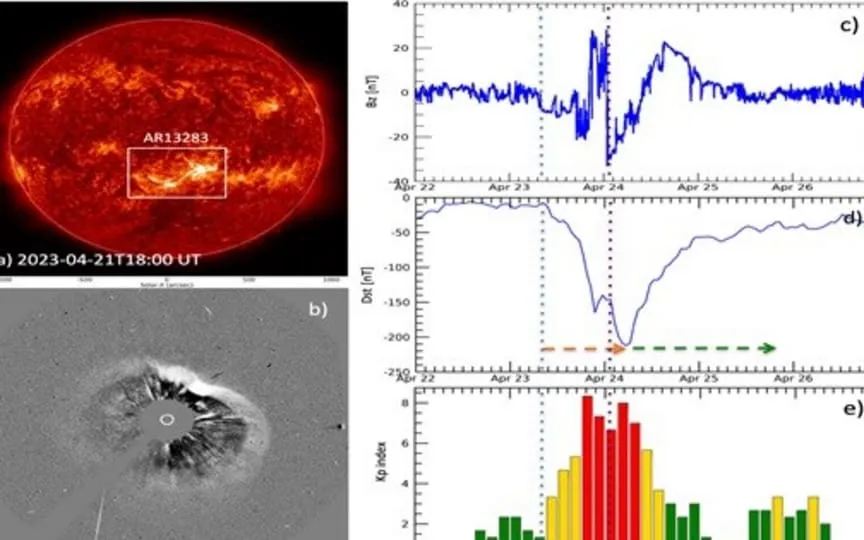Indian astronomers tracked the most intense geomagnetic storm that brought auroras to Ladakh
In April 2023, a strong geomagnetic storm lit up the skies with stunning auroras, reaching as far south as Ladakh in India. Typically, these auroras are only seen in the North Pole and northern regions, but this storm was so intense that it extended further south. Indian astronomers have now linked the origins of this storm to the Sun, utilizing data from various space telescopes operating in different wavelengths.
Coronal mass ejections (CMEs), massive eruptions of ionized gas and magnetic fields from the Sun, are known to trigger geomagnetic storms when they interact with Earth’s magnetic field. These storms can have significant impacts on technology both on Earth and in space, so understanding and predicting them is critical.
The 25th strongest geomagnetic storm of the solar cycle was ignited by a large-scale CME eruption originating from active region 13283 near the center of the solar disk on April 21, 2023. Traveling at speeds of about 1,500 km/s, the CME reached Earth’s vicinity on April 23, triggering a geomagnetic storm about an hour later. This storm peaked as a “G4 severe” event, leading to spectacular aurora displays captured by sky cameras at the Indian Astronomical Observatory in Ladakh, the Department of Science and Technology (DST) reported.
Scientists from the Indian Institute of Astrophysics identified the solar source of this storm in a study published in The Astrophysical Journal. Lead author Dr. P. Vemareddy noted the storm’s unexpected strength, given its launch from a region of the Sun’s relatively weak magnetic fields.
Their analysis revealed that the rotation of the CME, influenced by magnetic forces, played a crucial role. The CME structure rotated approximately 56 degrees clockwise during its journey from the Sun to Earth, aligning its magnetic fields south relative to Earth’s magnetic field. This alignment facilitated an efficient interaction with the Earth’s magnetic field, resulting in a powerful geomagnetic storm.
The study highlights the importance of understanding the whole picture of CMEs, including their magnetic structure and evolutionary mechanisms. With the launch of the Aditya-L1 space observatory, researchers expect to gain more insights into CME behavior. The Visible Emission Line Coronagraph (VELC) instrument on board Aditya-L1 will provide important imaging observations near the Sun, helping to better understand CME dynamics, from their origin to their impact on Earth’s space environment.




